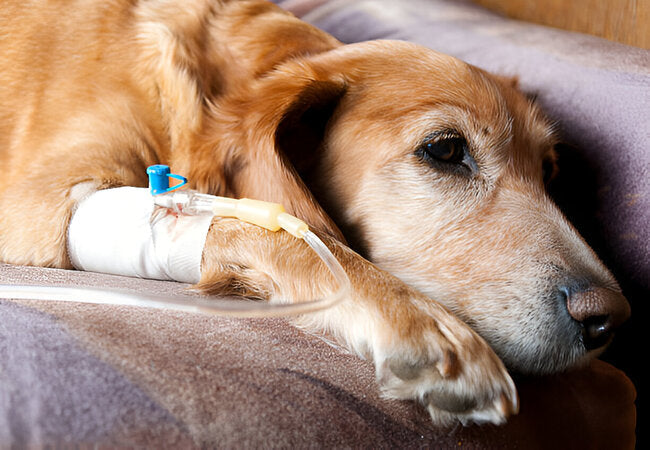Vet-Approved 2025 Guide: IV Catheters for Dogs – Safe Placement, Care & Support 🐶💉

In this article
Vet-Approved 2025 Guide: IV Catheters for Dogs – Safe Placement, Care & Support 🐶💉
By Dr. Duncan Houston BVSc
For many veterinary treatments—from surgeries and illness management to emergency interventions—IV catheters are essential tools in ensuring timely delivery of fluids, medications, blood products, and nutrition. As a practicing veterinarian, I’ve placed thousands of IV catheters in dogs of all breeds and sizes. In this in-depth, 2025 vet-authored guide, I’ll walk you through what IV catheters are, why and when we use them, step-by-step placement protocols, potential complications, home care, and supportive tools from trusted brands such as Ask A Vet. 🐾🩺
❓ What Is an IV Catheter?
An IV catheter is a small, sterile, hollow tube inserted into a vein—typically in the cephalic (front leg) or lateral saphenous (hind leg) veins—to maintain intravenous access. Once in place, a secure cap or T-port is attached and wrapped in bandage/tape to keep it in position. Dogs feel just a quick pinch upon insertion, and it shouldn’t hurt afterward.
📌 Why Dogs Need IV Catheters
IV catheters are used when:
- Dogs undergo surgery or anesthesia
- They need fluid therapy for dehydration, pancreatitis, renal disease, heatstroke, or gastroenteritis
- They require IV medications—antibiotics, analgesics, chemo
- They need blood transfusions or nutritional support
- They're receiving treatment for serious toxins, snakebites, anaphylaxis, Addison’s, or hypoglycemia
Without an IV catheter, vets may rely on slower or more painful alternatives like subcutaneous or intramuscular routes—but these are less effective in emergencies.
🔧 Step‑by‑Step Catheter Placement Procedure
Placing an IV catheter is a skilled procedure. The standardized approach involves:
- Preparation: Clip and aseptically clean the area—chlorhexidine/povidone-iodine scrub.
- Restraint: Keep the dog calm and positioned (often sternal), with its limb extended by a technician.
- Select catheter size: Typically 18–24 gauge depending on dog size—larger gauge for rapid fluid rates.
- Angle & entry: Insert needle bevel up at ~10–30°, once you see blood flash, advance catheter slightly.
- Advance catheter off needle: Push catheter into vein, withdraw needle, then attach cap or T-port.
- Secure & flush: Tape base, add vet-wrap, then flush with sterile saline to confirm patency.
- Final bandaging: Cover with non-adhesive and cohesive bandage tape. Monitor flow and limb comfort.
✅ Benefits of IV Catheters
- Facilitated quick delivery of fluids, drugs, and blood during emergencies or surgery.
- Reduces the need for repeat needle sticks, minimizing pain.
- Allows serial blood diagnostics without repeated venipuncture.
- Enables extended overnight or continuous therapy, especially in hospitalized pets.
⚠️ Possible Risks & Complications
While generally safe, watch for:
- Phlebitis: Vein irritation—look for swelling, heat, discomfort.
- Extravasation: Fluid leakage causes swelling or pain.
- Occlusion or clotting: Blocked catheters may alarm pumps or halt therapy.
- Infection: Redness, discharge or systemic signs indicate urgent veterinary care.
- Vein rupture (“blown vein”): Swelling above the site—requires catheter replacement.
Studies suggest 13–24% of hospitalized dogs may experience catheter-related issues.
⏱️ How Long Is a Catheter Left In?
In hospital settings, catheters are usually replaced every ~72 hours, or sooner if complications arise. At-home overnight presence is possible under medical guidance, but owners must watch for chewing, swelling, or leaks.
🏡 Caring for a Dog with an IV Catheter at Home
- Protect the site: Keep cone or wrap in place—prevent chewing.
- Check regularly: Look for swelling, redness, warmth, or discharge.
- Keep bandage dry: No baths or water immersion.
- Restrict activity: Avoid running or rough play.
- Follow scheduled changes: Return to vet clinic on time or as advised.
- Log administration: Record fluid volumes, medications, and observations.
🌟 Alternatives to IV Catheters
When IV access isn't possible:
- Subcutaneous fluids—slower but suitable for mild dehydration.
- Intramuscular or subcutaneous meds—useful, but not for emergencies.
- Note: In critical cases (anaphylaxis, shock), IV is safest and fastest.
🧷 Special Tips by Breeds & Conditions
- Brachycephalic breeds: Vein collapse is common; skilled tech and small gauge are often needed.
- Tiny toy breeds: Use 24G or 22G catheters to avoid vascular damage.
- Senior pets: Fragile veins—be cautious and gentle.
- Systemic disease: Good hydration and aseptic technique are essential.
🛠️ Enhanced Comfort & Brand‑Supported Care
For dogs with IV catheters, minimize stress using calming and supportive tools:
- Ask A Vet: In-app guidance on monitoring catheter issues and troubleshooting at home.
🚨 When to Call the Vet Immediately
If you observe:
- Pain, swelling, heat, or discharge at the catheter site
- Fluid leak or drop in flow rate
- Persistent bleeding or limb swelling
- Signs of systemic illness: fever, lethargy, poor appetite, or vomiting
Your vet may need to remove or replace the catheter, treat infection, or adjust therapy.
🏁 Final Thoughts
IV catheters are invaluable in modern veterinary medicine—they provide fast, efficient access for fluids, medications, transfusions, and diagnostics. With proper placement techniques, vigilant care, and timely monitoring, most dogs tolerate them well and benefit significantly during recovery from surgery or illness.
This 2025 vet-approved guide aims to empower pet owners with knowledge, confidence, and compassion during their dog’s care journey. Use tools like Ask A Vet, Woopf, and Purrz to support wellbeing through every stage. 🐶❤️
Need support or have questions? Visit Ask A Vet for expert advice, and explore relaxing aids to keep your pup comfortable and secure.
Wishing you and your furry friend a smooth, safe, and stress-free recovery! 🐾✨






